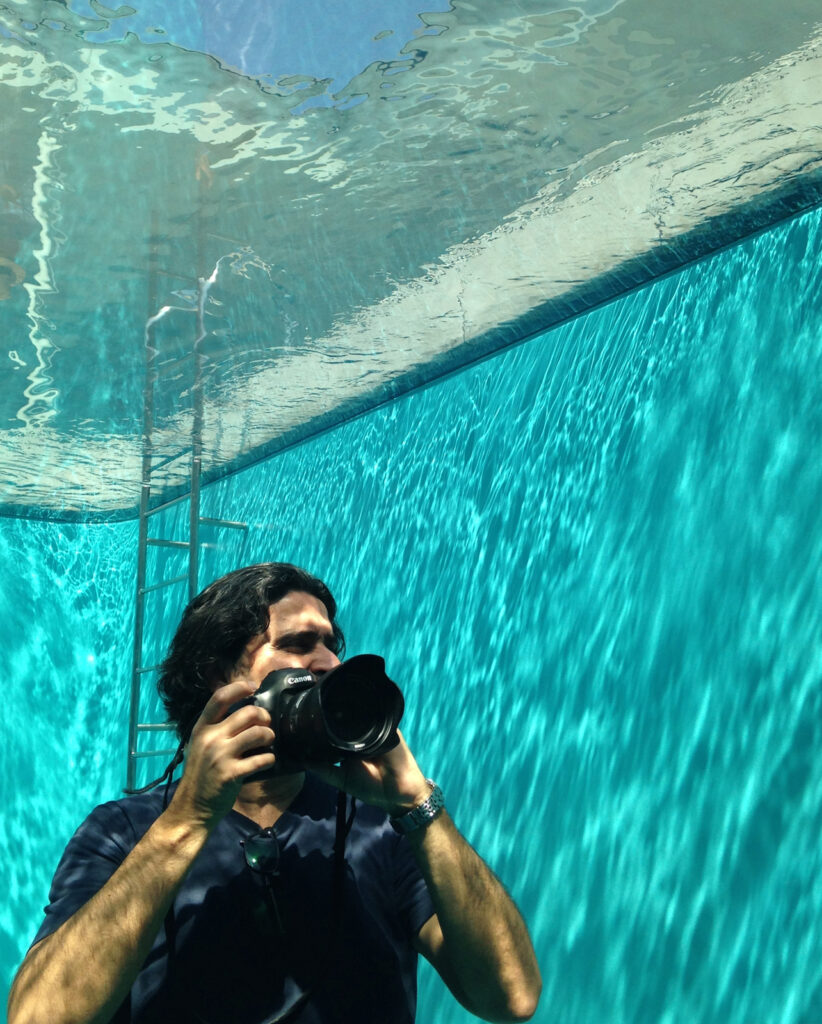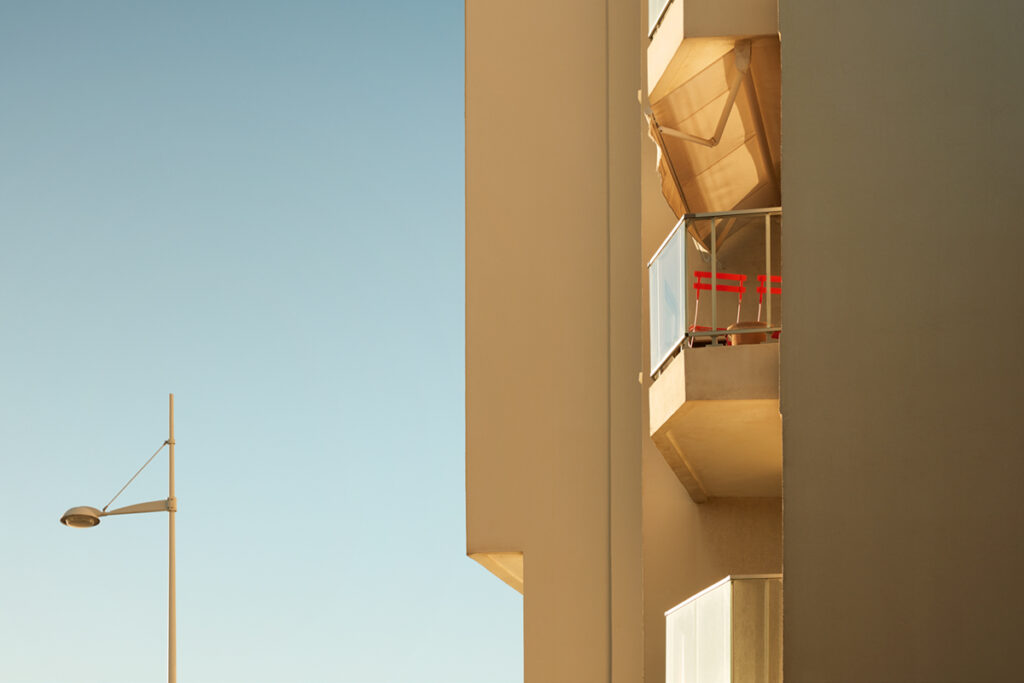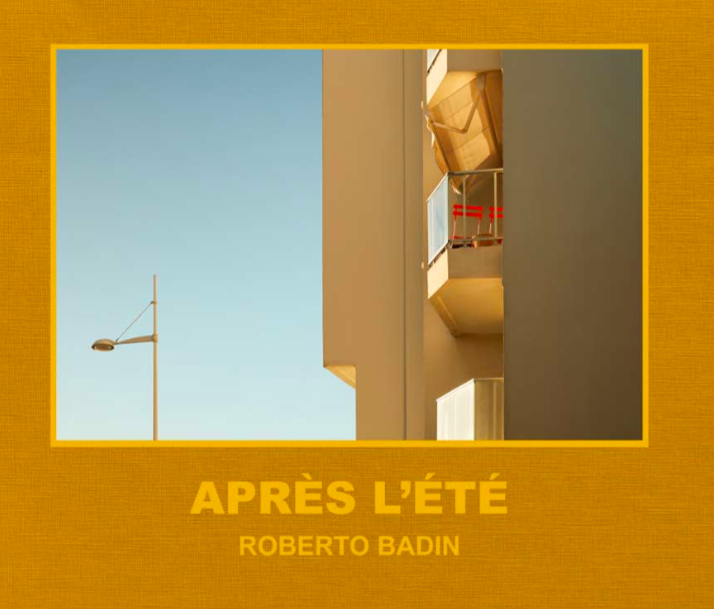
Born in Rio de Janeiro, Roberto Badin started out as a fashion and reportage photographer with an interest in studio-based still life photography. His first photographic book Inside Japan featured cleverly abstracted images capturing daily life in Japan and stemmed from a love of Japanese cartoons developed during his childhood in Brazil in the 1970s, the films of director Yasujiro Ozu, and ‘The Gourmet Solitaire’ comic strip by Jiro Taniguchi and Masayuki Kusumi.
Badin works with ambient light to create a natural effect, creating abstract images that capture extraordinary beauty in everyday scenarios. His latest photographic book Après L’Été features a series of evocative images captured by Badin in the Basque coast. The book was launched at Yvon Lambert gallery in Paris earlier this year and Badin recently exhibited prints from the book at Paris Photo.
Badin has exhibited widely in galleries and also worked with brands on award-winning campaigns, notably his 2019 McDonald’s campaign that used the beauty of Parisian architecture to maximum effect to create what must surely be the most aesthetically pleasing imagery of the golden arches in history. The campaign won at Cannes Lions and D&AD in the photography category, proving that fine art photography can successfully cross over into advertising.
His photography has been published in the New York Times, Vogue and Harper’s Bazaar Brazil, and he has collaborated with global fashion houses including Yves Saint Laurent, Prada, Chloe and Dior.
Culturalee caught up with Roberto Badin to ask him about his inspirations, his new book and his creative process.

Culturalee: Can you give an insight into the photographs you exhibited at Paris Photo this year?
Roberto Badin: The Après L’été exhibition took place at Galerie Joseph, from Nov 6th to 12th, during Paris Photo week 2023. I proposed a linear hanging where all the frames were in 30 x 40cm format vertically; it didn’t matter if the image inside was in width or height. All in colour, printed by a professional lab in Bordeaux under my entire supervision. All the photos had more or less the same format, approximately 13 x 18 cm which required the viewer to get closer to realize the immensity of the details of each narration, an important reason for me to choose anti-reflective glass.
What’s your creative process – are you an analogue or digital photographer?
I work with both, digital and analogue. I started photography in the 90’s! For the Après L’été project I worked mostly in digital with my Canon, but there are a few shots with my iphone too.
Concerning this specific creative process: Après L’été is my 2nd book, launched this year in Paris (at Yvon Lambert Bookstore) and London (at Photobook Café in Shoreditch). Published by 37.2, it has 135 images / 160 pages and text (French and English) by Ana Cardinale.
I chose to explore an area around my new town, Biarritz in South-West of France. What impressed me the most when we settled on the Basque Coast was the light and different changes of atmosphere, which proved to be even stronger off-season. Unlike a trip, where we arrive at a destination with a blank gaze; walking the streets of a familiar environment becomes a challenge. It was a very different project of my first book: Inside Japan (published by Benjamin Blanck in 2018).
Confronting yourself daily with the same details and atmospheres, everything can seem almost too normal to be interesting or to attract the eye. I noticed that I always stayed within a 4km* radius of my home. This ritual became a journey with imaginary boundaries, leaving free rein to intuitions and chance as I walked. My approach came from a desire to decipher a delimited field rather than being a literal testimony. Almost like a cartography where light and emotion were my only guides. Unintentionally, I polarized my eternal sources of inspiration which are architecture, cinema and literature reminding me of George Perec (French writer from the 60’s) and what he called “l’infra-ordinaire”.
Perec said once: “What happens every day and comes back every day, the banal, the daily, the obvious, the common, the ordinary, the infra-ordinary, the background noise, the usual, how to realize it, how to question it, how to describe it?”
The subject of this project is not necessarily about emptiness, but rather what is around and within. It is a matter of observing a fragment of reality as I see it and feel it. Sharing this magic uncovered which consists in questioning the habitual. Après l’été / After Summer is a project with the only purpose of recounting emotions brought to me by my new life, without the pretension of telling any other story than the one you can make yourself by looking at the photographs. What we really see and what we discover over time, simply by observing more closely.
How would you define ‘culture’?
Culture is as essential as the water we drink, the food we eat and the air we breathe. Art provokes an emotion in the human being which allows us to overcome challenges and helps to make a reflection about ourselves.

What made you decided to become a photographer and where did you study?
I had the chance to discover that I wanted to be a photographer from the age of 14. I lived in Rio de Janeiro in Brazil and I always had my little camera with me. Then, I moved to Paris in the late 80’s. It was very difficult in the beginning. I didn’t have neither the time or money to take photography lessons, I learned everything in books and in practice for years.The important thing is to always remain curious about new approaches. I did a couple of little different jobs as an assistant and I quickly decided to set up on my own; first as a fashion and reportage photographer. The still life began to interest me towards the end of the 90s. Today I allow myself to move from one universe to another, I also direct some commercial films and above all I devote myself entirely to my personal projects.
Your photography has been exhibited widely in respected galleries, and you’ve also been commissioned to work with brands on advertising campaigns. Do you have a different approach to the subject when you’re working on a commercial campaign compared to a fine art project?
I don’t feel like I draw a line between my personal work and that of advertising commissions. The only important difference is that for commissioned work, we must be fully attentive to the proposed project and not impose a vision that could distort the concept. We put our vision in the interest of teamwork.
What has been your most moving cultural experience to date?
If you allow me, I prefer to talk about my first great inspiration in art. it is without a doubt the architectural achievements of the Brazilian architect Oscar Niemeyer. I lived in Copacabana in Rio, a few meters from his house, and I was always very impressed by his works and later, by his humanist side as well. Architecture can be a great source of artistic inspiration. This seems more often in the past than now. Even if certain contemporary architects can also express themselves in this movement.
Who are the cultural icons and photographers that have inspired you most?
No order of preference, cultural inspiration comes from eveywhere; Oscar Niemeyer, Alvar Aalto, Mies van der Rohe, Isamu Noguchi, Romain Gary, Ray K. Metzker, Raph Gibson, Stephen Shore, among many others…
Any tips for young photographers wanting to make an impression on the international art scene?
First of all, you have to master the technique to the point of forgetting it, so that it can become part of the body and the camera. But above all, maybe stop looking at social media, we have the sad impression that they all do the same thing. Or in any case, it is often the same sources of inspiration, which finally makes them look like almost the same artwork.



